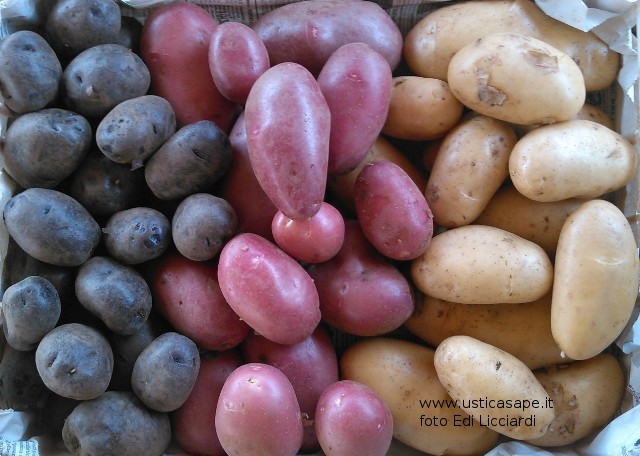
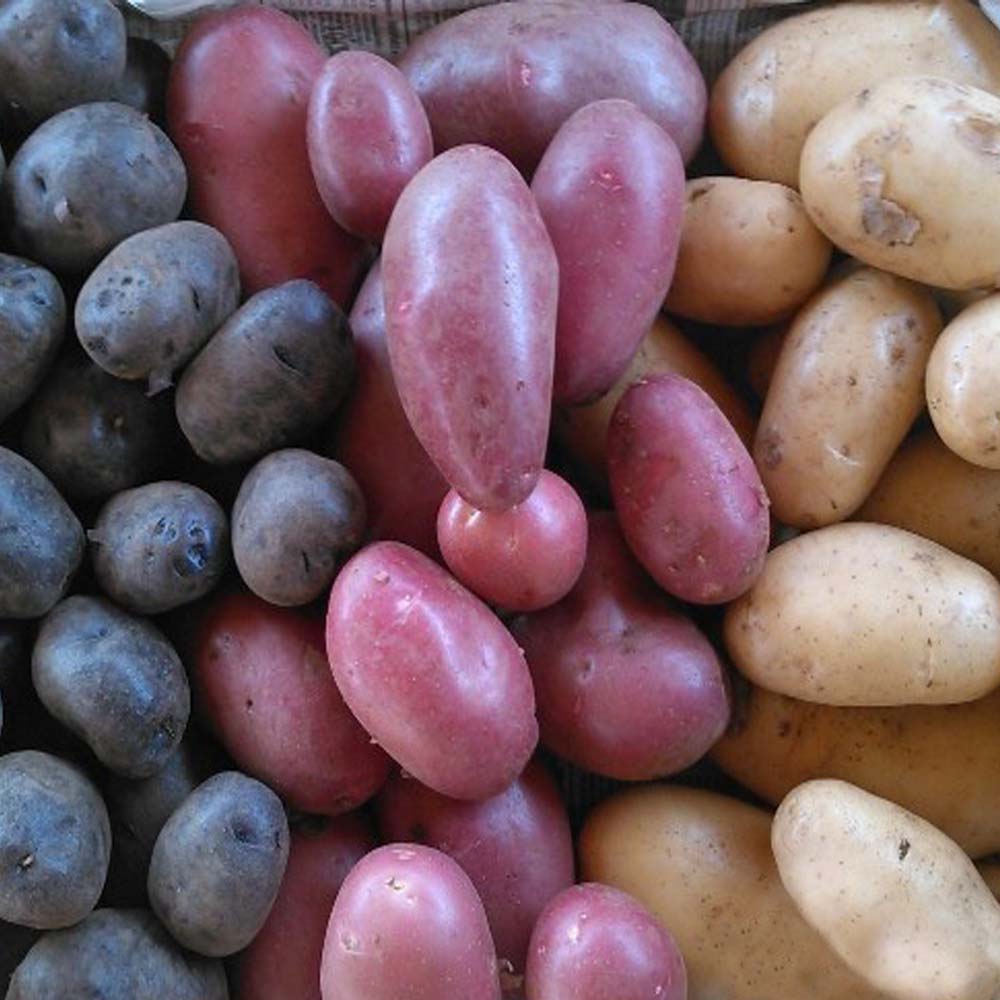
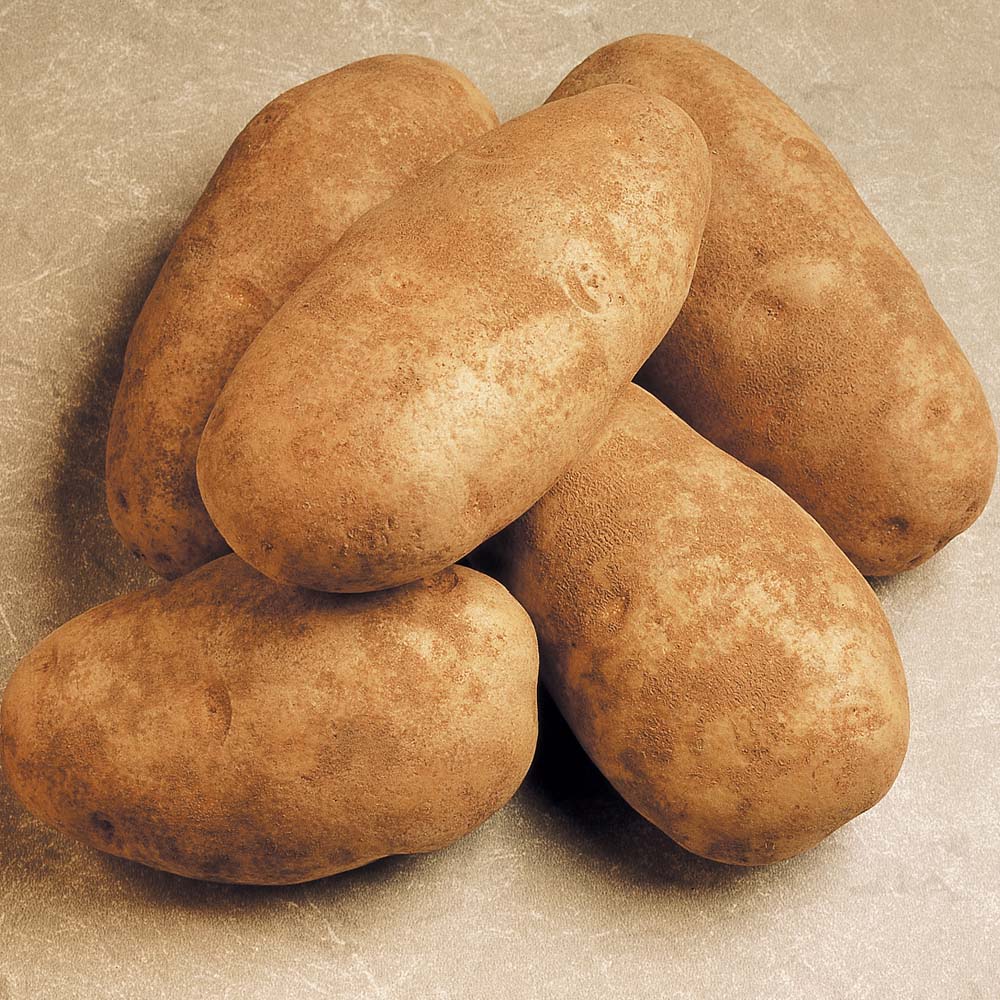
Potatoes have become a staple food in many parts of the world and an integral part of much of the world's food supply. Potatoes are the fourth most consumed crop in the world, behind rice, wheat and corn.
Nutrition
a medium baked potato is an excellent source of potassium, vitamin C, and vitamin B6; plus, it's a good source of fiber, folate, and the essential minerals phosphorus and magnesium.
French fries, hash browns, and other processed potato products have grown more popular as the technology to freeze the vegetables has improved.
The best way to eat a potato is in its whole, unprocessed form. Baking a potato is the best way to prepare it, as baking, or microwaving, a potato causes the lowest amount of nutrients to be lost, she said.
The next-healthiest way to cook a potato is through steaming, which causes less nutrient loss than boiling. Cooking a peeled potato in this way results in significant nutrient loss, as the water-soluble nutrients leach out into the water.
Here are the varieties typically available in an American grocery store.

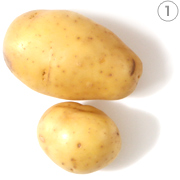
Yukon Gold
Alternate Names: Yellow
Characteristics: Smooth-skinned and a bit waxy, this now ubiquitous yellow potato was made available to the general public only in 1980. It has a light buttery color on the inside, and when cooked, the Yukon Gold becomes flaky and a bit starchy (although not as much as a russet). Use these when you're looking to mash or shred, but they're waxy enough that they'll also hold their shape if cooked in a soup or stew.
Recipes to try:
·
Creamy mashed potatoes
·
Smoked trout chowder
· Garlic roasted potatoes
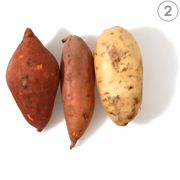
Sweet Potatoes
Characteristics: As the name suggests, sweet potatoes are considerably sweeter than other potatoes. They're also larger, heavier, and starchier, and like a russet, the skins are coarse and should be removed before eating. Chances are they're being sold as "yams" in the marketplace, but that's a misnomer. Sweet potatoes look and taste nothing like true yams, which are hard to find. Pictured above are three varieties of sweet potatoes that are marketed as "yams": Garnet, Jewel, and Hannah. Other varieties you may find are Japanese, Beauregard, and Covington. The flesh coloring will vary depending on the type: white, bright orange, deep red-orange, and even purple. And while roasting is a great way to bring out the sweetness, steaming will render them ever so moist and tender while retaining their signature flavor.
Recipes to try:
·
Sweet potato gnocchi with sage and brown butter
·
Sweet Potato tots
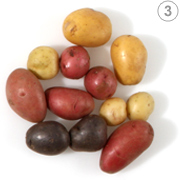
Baby Potatoes
Alternate Names: New potatoes, creamers
Characteristics: Immature potatoes—no matter if they're red, yellow, or purple—are deemed baby, new, or creamer. Because of their small size, these potatoes are best cooked whole—boiled, steamed, and even roasted—allowing the skins to add a colorful element to dishes.
Recipes to try:
·
Baby Potatoes fondantes
·
New Herb-roasted potatoes
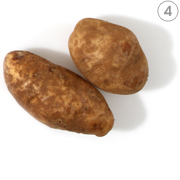
Brown Russets
Alternate Name: Idaho
Characteristics: Russets are very starchy potatoes that are long and wide with skins that are dark and earthy, and rough to the touch. If you cut one raw, there's a firmness, and yet when it's cooked, a russet will yield a light, fluffy interior. While the Idaho is not great at retaining its shape, it's the preferred potato for frying, baking, and mashing.
Recipes to try:
·
Allumette-potatoes - Belgian Fries
·
Croquette-potatoes
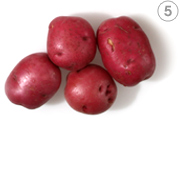
Red Potato
Alternate Names: Red Bliss
Characteristics: Red potatoes have a smooth thin skin that makes for a striking visual contrast against the white flesh. Its skin is edible, so it's not necessary to peel or remove it after cooking. Like many waxy varieties, red potatoes are low in starch and won't produce a light, fluffy texture. However, they are prime candidates for boiling and roasting, and work well in dishes that would benefit from a potato that holds its shape—even when sliced and diced—such as salads and gratins.
Recipes to try:
·
Balsamic Red Potato Salad
·
fidleheads with asparagus and new red potatoes
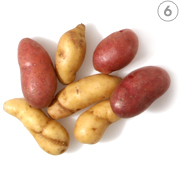
Fingerlings
Characteristics: Just as their name suggests, fingerlings somewhat resemble fingers. Knobby, slim, firm, and short, these heirloom varieties are mainly found at farmers' markets or specialty gourmet shops. Fingerlings have distinctive flavors, usually nutty or earthy. Pictured left are Russian Banana and French, two of the more abundant types generally available. Both happen to have a waxy yellow flesh, but the French, underneath its red exterior, can sometimes show a streak of red. Other varieties to look for include LaRatte and Purple Peruvian. Roasting keeps these diminutive, uniquely shaped potatoes intact, but they're versatile and can be cooked any which way.
Recipes to try:
·
Fingerling Potato Tourte au camembert-Potato cabbage and Camembert casserole
·
Cod Chowderwith Fingerling Potatoes
101 recipes selected, Page 3 of 6
101 recipes selected, Page 3 of 6























